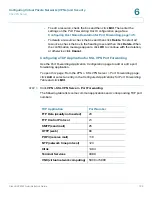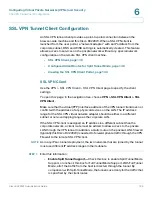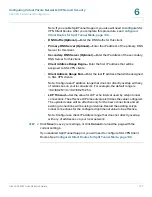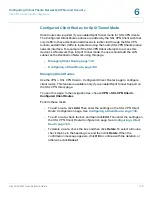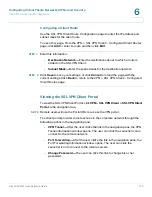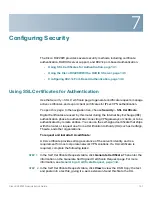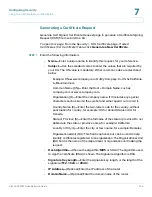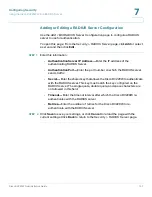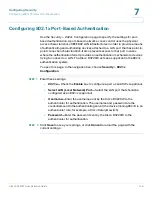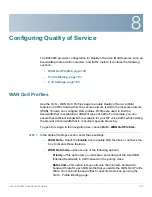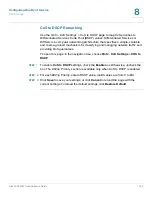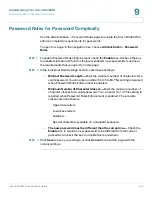
7
Cisco RV220W Administration Guide
141
Configuring Security
The Cisco RV220W provides several security methods, including certificate
authentication, RADIUS server support, and 802.1x port-based authentication.
•
Using SSL Certificates for Authentication, page 141
•
Using the Cisco RV220W With a RADIUS Server, page 146
•
Configuring 802.1x Port-Based Authentication, page 148
Using SSL Certificates for Authentication
Use the
Security > SSL Certificate
page to generate certificate requests, manage
active certificates, and export client certificates for IPsec VPN authentication.
To open this page:
In the navigation tree, choose
Security
>
SSL Certificate
.
Digital Certificates are used by this router during the Internet Key Exchange (IKE)
authentication phase to authenticate connecting VPN gateways or clients, or to be
authenticated by remote entities. You can use the self-signed certificate that ships
with the router, or request one from a Certification Authority (CA) such as VeriSign,
Thawte, and other organizations.
To request and install a CA certificate:
A CA certificate provides strong assurance of the server's identity and is a
requirement for most corporate network VPN solutions. If a CA certificate is
required, complete the following tasks:
STEP 1
In the
Self Certificate Requests
table, click
Generate Certificate
. Then enter the
information on the
Generate Self Signed Certificate Request
page. For more
information, see
Generating a Certificate Request, page 144
.
STEP 2
In the
Self Certificate Requests
table, click
View
to view the CSR. Copy the text
and paste into a text file, giving it a
.pem
extension. Send this file to the CA.








